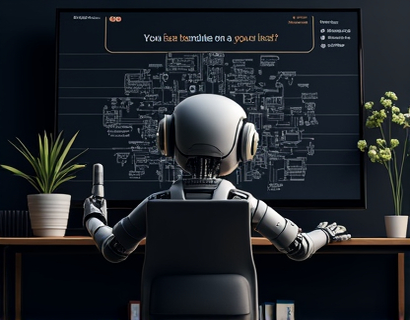Smart Home Elevation: Embracing the Future of Home Technology
In the rapidly evolving landscape of home technology, smart home elevation has emerged as a transformative force, redefining the way we live and interact with our living spaces. The integration of cutting-edge appliances and devices into our homes is no longer a futuristic dream but a tangible reality. This article delves into the latest innovations in smart home solutions, exploring how these advancements can seamlessly blend technology with daily life, offering unparalleled convenience, efficiency, and comfort.
The concept of a smart home goes beyond mere automation; it encompasses a holistic approach to enhancing the quality of life. By leveraging advanced technologies such as artificial intelligence, IoT (Internet of Things), and machine learning, modern appliances are becoming smarter, more intuitive, and increasingly user-friendly. These innovations are not just about making tasks easier; they are about creating a living environment that adapts to our needs, preferences, and lifestyles.
Understanding Smart Home Appliances
Smart home appliances are devices that can be controlled, monitored, and optimized through a network, typically a home Wi-Fi connection. These appliances range from traditional items like refrigerators and washing machines to more specialized devices such as smart thermostats and security systems. The key feature that sets smart appliances apart is their connectivity and ability to communicate with other devices and systems within the home.
One of the most significant advantages of smart home appliances is their ability to enhance energy efficiency. Smart thermostats, for instance, learn your temperature preferences and adjust heating and cooling schedules accordingly, leading to significant energy savings. Similarly, smart lighting systems can automatically adjust brightness based on natural light levels and occupancy, further reducing energy consumption.
Latest Innovations in Smart Home Technology
The market for smart home appliances is rapidly expanding, with new innovations emerging regularly. Here are some of the latest and most exciting developments:
- Smart Refrigerators: These appliances have evolved into mini-kitchens with features like built-in cameras, touch screens, and integration with streaming services. They can monitor food expiration dates, suggest recipes based on available ingredients, and even order groceries online.
- Voice-Controlled Systems: Devices like smart speakers and voice assistants have become central hubs for controlling various smart devices. With just a voice command, you can adjust the thermostat, turn on lights, or start a coffee maker.
- Automated Window Treatments: Smart blinds and curtains can be programmed to open and close based on the time of day, sunlight levels, and your preferences. This not only adds convenience but also helps regulate indoor temperature and save energy.
- Smart Security Cameras: These cameras offer real-time monitoring, motion detection, and alerts. Some models even feature facial recognition and can integrate with other smart devices to enhance home security.
- Wearable Smart Home Controllers: Devices like smartwatches and fitness trackers can control home appliances, adjust lighting, and manage security systems, all from your wrist.
These innovations are not just novelty items; they are practical solutions that can significantly improve the functionality and comfort of your home. By integrating these devices, you can create a more connected, efficient, and enjoyable living environment.
Benefits of Smart Home Elevation
The benefits of smart home elevation are multifaceted, touching on convenience, security, energy efficiency, and lifestyle enhancement:
Convenience is perhaps the most immediate and noticeable benefit. With smart appliances, many tasks that once required manual intervention can now be managed with a few taps on a smartphone or through voice commands. This ease of use is especially valuable for busy individuals or those with mobility issues.
Security is another critical aspect where smart home technology shines. Smart security systems can provide real-time alerts, high-definition video streaming, and remote access, giving you peace of mind whether you're at home or away. The integration of smart locks, cameras, and sensors creates a robust security network that is both intelligent and responsive.
Energy efficiency is a significant advantage of smart home appliances. By optimizing the use of resources and automating energy-intensive tasks, these devices help reduce utility bills and minimize environmental impact. Smart home systems can analyze usage patterns and provide insights to further optimize energy consumption.
Beyond practical benefits, smart home elevation can also enhance your lifestyle. Imagine coming home to a perfectly set temperature, lights dimmed to your preference, and your favorite music playing softly in the background. These small touches can transform your home into a sanctuary that caters to your needs and preferences.
Choosing the Right Smart Appliances
With the vast array of smart home appliances available, selecting the right ones for your home can be overwhelming. Here are some factors to consider when making your choices:
First, consider your specific needs and the areas of your home where smart technology can provide the most value. For example, if energy efficiency is a priority, focus on smart thermostats and lighting systems. If security is a concern, invest in high-quality smart security cameras and door locks.
Compatibility is another crucial factor. Ensure that the devices you choose are compatible with your existing smart home ecosystem. Most smart devices use standard protocols like Wi-Fi, Bluetooth, or Zigbee, but it's essential to check for interoperability with your preferred hub or controller.
User interface and ease of use are also important. While advanced features are appealing, the device should be intuitive and user-friendly. Look for appliances with clear instructions, responsive interfaces, and reliable customer support.
Lastly, consider the cost and long-term value. While premium smart appliances may come with a higher price tag, they often offer greater functionality and durability. Calculate the potential savings in energy costs and the added convenience to determine if the investment is worthwhile.
Creating a Smart Home Ecosystem
Building a cohesive smart home ecosystem involves more than just purchasing individual devices. It requires a strategic approach to integration and connectivity. Here are some steps to help you create a seamless and efficient smart home:
Start by selecting a central hub or controller that can manage multiple devices. Popular options include smart speakers, dedicated smart home hubs, and voice assistants. This central point will serve as the brain of your smart home, allowing for unified control and automation.
Next, focus on creating zones or areas within your home that can be managed as a unit. For example, you can set up a living room zone with smart lights, a smart TV, and a sound system, all controlled through a single app or voice command.
Automation is key to maximizing the benefits of a smart home. Set up routines that trigger multiple actions based on specific conditions or schedules. For instance, you can create a "Goodnight" routine that locks all doors, turns off lights, and adjusts the thermostat with a single command.
Regular updates and maintenance are essential to ensure your smart devices remain secure and functional. Keep firmware up to date, change default passwords, and monitor device performance to prevent issues.
Future Trends in Smart Home Technology
The future of smart home technology is exciting and full of potential. Here are some trends to watch:
One significant trend is the integration of artificial intelligence and machine learning. Smart devices will become more intuitive, learning from your habits and preferences to provide personalized experiences. For example, a smart home system could predict your arrival time and adjust the environment accordingly without any manual input.
Another area of growth is the expansion of voice control and natural language processing. As voice assistants become more advanced, they will handle more complex tasks and integrate seamlessly with a wider range of devices.
Energy harvesting and self-sustaining devices are also on the horizon. Imagine appliances that generate their own power through solar panels or kinetic energy, reducing reliance on traditional energy sources.
Lastly, the convergence of smart home technology with other industries, such as healthcare and entertainment, will lead to innovative applications. Smart home devices could monitor health metrics, provide personalized wellness recommendations, or even transform your living room into a virtual cinema.
Conclusion
Smart home elevation represents a significant leap forward in home technology, offering a blend of convenience, efficiency, and lifestyle enhancement. By embracing these innovations, you can create a living space that not only meets your current needs but also adapts to your evolving lifestyle. As technology continues to advance, the possibilities for smart home solutions are endless, promising a future where homes are smarter, more connected, and truly tailored to our lives.










































